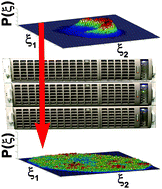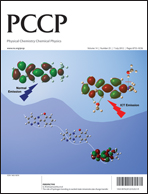Multidimensional free energy volumes offer unique insights into reaction mechanisms, molecular conformation and association
Abstract
Free energy is a central measure in statistical mechanics and the means by which other thermodynamic properties of a system may be accessed. Using an efficient numerical method referred to as the Free Energy from Adaptive Reaction Coordinate Forces (FEARCF) method it is shown that multidimensional free energy volumes (FEVs) are computable and that they are critical to the understanding of reactions, conformational analysis and molecular association. Specifically the FEV of the hydrolysis reaction catalysed by a cellobiohydrolase I is shown to reveal molecular details of the reaction mechanism. The reaction is understood from a combination of the two dimensional reaction free energy surface, W(ξ1, ξ2) and the three dimensional glucopyranose ring pucker FEV, W(ξ1, ξ2, ξ3). These studies provide for the first time details of the evolution of the oxocarbenium ion, which is a key to characterizing transition state structures seen in carbohydrate chemistry. A long-standing challenge has been the unambiguous assignment of the relative orientation of molecular pairs in solution. Here we describe how the molecular association of the


 Please wait while we load your content...
Please wait while we load your content...